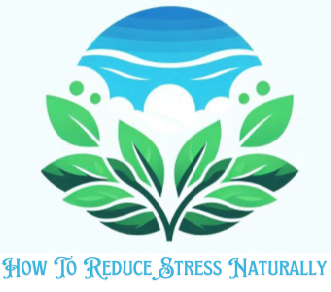So what is the difference between meditation and mindfulness? Today we are going to talk about that. They both can help us deal with stress, and improve our mood and well-being.

So if you’re curious about the buzz around meditation and mindfulness, I’m here to help you understand the basics. Meditation, at its core, is an ancient practice with roots stretching across various cultures and traditions. To be clear, it’s an intentional technique designed to promote inner peace and mental clarity which we all need.
Mindfulness, while often connected with meditation, is actually a key element of it. It involves maintaining awareness of our thoughts, feelings, bodily sensations, and the surrounding environment. Mindfulness represents a state of presence and consciousness that can deeply enrich our life experience.
Now, this discussion isn’t just about esoteric traditions. It is about practical tools for managing stress and improving our quality of life. In these times where the pace of life feels relentless, incorporating these practices into your routine can be a game-changer for your mental well-being.
So, what does this all really mean for you? Stay with me. As we journey further, you’re going to find out about the various nuances of meditation. We will take a closer look at its many forms, from seated meditations with focused breathing to dynamic ones. The last one consists of movement and we also would examine the evidence behind the mental health benefits of meditation.
Interpreting Meditation: A Deep Dive
Meditation basically is an umbrella term for a variety of practices designed to promote relaxation, build internal energy, and develop compassion, patience, and love. One special form of meditation aims for effortlessly sustained concentration. It is made to enable its practitioner to enjoy an indestructible sense of well-being while engaging in any life activity.

There are several types of meditation, each with a unique focus and various techniques. For instance, concentrative meditation focuses on a single point, such as breathing or a mantra. However, in mindfulness meditation, the focus includes all aspects of the environment.
Beyond the specifics of each technique, the general purpose of meditation is to quiet the mind and reduce stress. It creates a heightened sense of awareness and brings about a peaceful state. People often turn to meditation for its benefits, such as reduced anxiety, improved emotional health, and enhanced self-awareness.
If we talk about the effectiveness of meditation, many scientific studies corroborate its benefits. Research suggests that meditation, for example, can rewire brain circuits or improve quality of life. For example, studies have demonstrated reduced activity in the default mode network of the brain, which is involved in mind-wandering. Those thoughts are a source of many of our anxieties.
As we explore these various meditation methods, keep in mind that there’s no “right” way to meditate. The best approach is the one that resonates with you and fits your goals and lifestyle.
It doesn’t matter if you are drawn to transcendental meditation or guided visualization, you’re making a positive choice for your mental well-being. Or maybe you like Zen practices? Everything like this will help you manage stress and be great for your well-being.
Mindfulness Explained: More Than a Practice
You are going to find out about how mindfulness goes beyond just a technique. To be clear it is actually a way of being. Firstly, let’s clarify what mindfulness really means. It is about being fully present, aware of where we are and what we’re doing, but not overly reactive to what’s going on around us.
This isn’t just about sitting still with your eyes closed. I’m talking about a state of mind that you can carry into every fragment of your daily life. Can you imagine being mindful while sending an email or engaging in conversation? For sure, you can definitely do that while you walking. In my opinion, that is what makes mindfulness so remarkable, so amazing.

Incorporating mindfulness into your routine doesn’t need formal meditation sessions. You can instead focus on simple acts like the sensation of your breath coming in and out, or the sounds surrounding you as you go about your day.
Each of these moments can become an opportunity for mindfulness. Every moment can be like a meditation and help you achieve better mental health and reduced stress levels.
So, choose something that resonates with you, something that you like. It could be mindful eating or mindful walking. The idea is to find moments throughout your day to ground yourself in the present moment. In that way, you can create brief oases of calm in this chaotic world.
By practicing mindfulness regularly, you are enhancing your capacity to handle stress and anxiety. You would also have a well-balanced mind and that can make many things easier for you.
This makes improvements in your overall quality of life. Who doesn’t want that? Now imagine combining these everyday moments of mindfulness with the structured practice of meditation. The effect can be deeply transformative.
Distinguishing Features Between Meditation and Mindfulness
So you’re looking to get a handle on the unique aspects of meditation and mindfulness. These practices have distinct characteristics.
Meditation is often about creating a dedicated time and space to focus inward and go into deep relaxation. It can also mean engaging in a spiritual quest. It’s like setting an appointment with your own mind, often leading to a deep sense of peace.
Mindfulness, on the other hand, doesn’t necessarily require you to carve out a portion of your day or find a quiet corner. It’s about being fully present in the moment, whether you’re eating, walking, or even in the middle of a hectic workday.

To illustrate, for example, imagine meditation as a dedicated workout for your brain at the gym. But mindfulness is the healthy choices you make throughout the day. That could be like taking the stairs instead of the elevator. However, in my opinion, this is not always the case, I love meditating and being mindful while walking in nature or just down the street.
Still, wondering whether to meditate or just be more mindful? But why not both? Right? Each enhances the other. For me, mindfulness always goes together with meditation, it is hard to separate them if I am honest. Meditation can deepen your capacity for mindfulness, while mindfulness can make your meditation practice richer.
Conclusion
Now I hope you understand what is the difference between meditation and mindfulness. They both can help us deal with stress, and improve our mood and well-being.
I really hope that you’ve gained a clear perspective on meditation and mindfulness. This isn’t just about knowing the differences. It’s about finding what resonates with you and incorporating it into your life seamlessly and easily.
Are you ready to learn more about meditation and what it means? If you are, CLICK HERE to get more information.
I like to hear from you, so please leave me a comment below to let me know if this article helped you.
If you want to know more about ways how you can manage stress, please subscribe to this blog, and you will receive a notification, when a new post is published.
If you think this article is helpful, please share it.
I would love to hear your feedback. What do you think about mindfulness and meditation? How did this article help you? Are you ready to incorporate meditation and mindfulness into your life? Which meditation practices do you like? What kind of meditation have you tried before? Please leave your comments in the comment section below.
Thanks! Have a nice day! Until later
Linda Mo
Founder and owner of How To Reduce Stress Naturally
